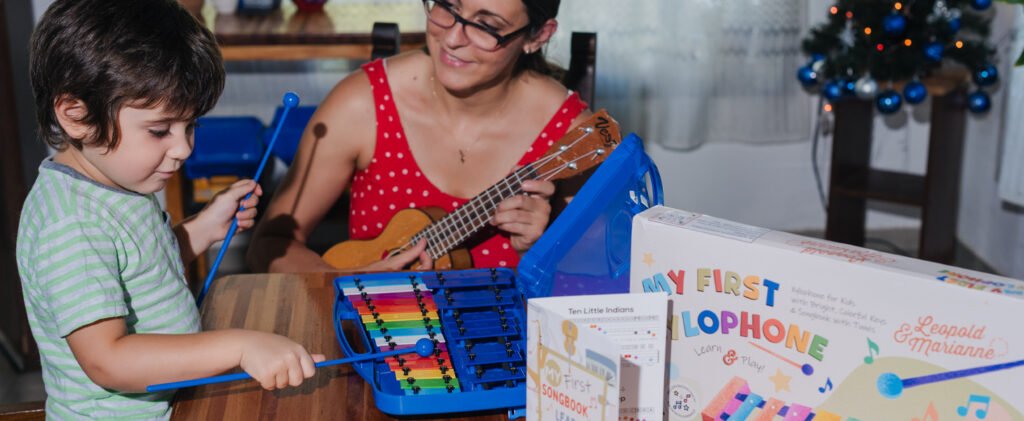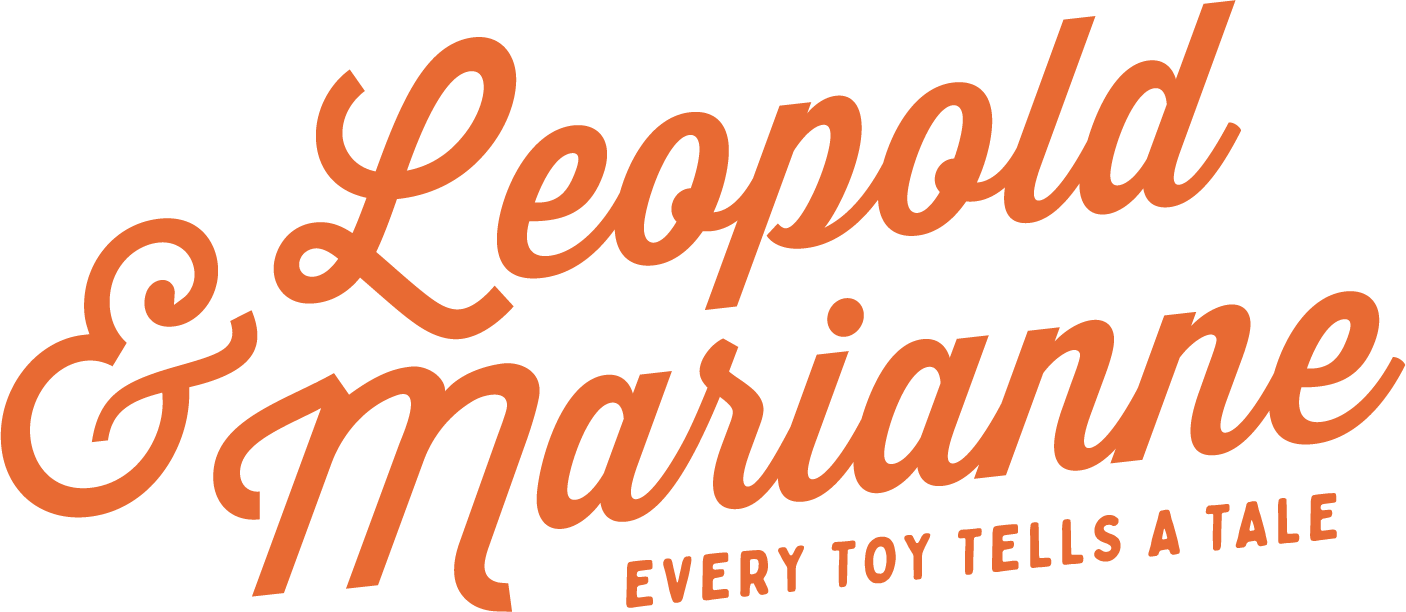Music brings joy and creativity to life, and the Leopold & Marianne xylophone is the perfect tool to spark that joy in children of all ages. Here’s how you can use it to help kids learn and grow, tailored to their unique stages of development:
Table of Contents
For 5-Year-Olds: A World of Colorful Sounds

Five-year-olds love exploring the world through colors and sounds, and the xylophone’s vibrant bars make it easy to combine the two:
- Learning Through Colors: Using matching flashcards, you can ask your child to play the colors one-by-one, to get familiar with each color, each key, and each sound.
We can experiment with different pitches: we have two pitches for each color – recognizing the sounds in each octave and introduce the difference between high sounds and bass sounds.
Here, you can download the flashcards with the matching colors to use with our xylophone. You can also edit the template to make it more personalized!
- Creating Small Melodies: Arrange the flashcards in a sequence that forms a melody, making 3 to 5-note scales. Following these patterns helps improve memory and coordination while keeping things playful.
Downloading the same template as before, you will have examples of melodies on pages 2, 4, and 6, and after each page, you will have a blank template to create your own! You can even grab some colors and ask your child to paint the squares and create their own melodies.
- Exploring Pitch: As your child taps on the bars, they’ll start noticing the different pitches. You can even guide them to play familiar songs using color-coded instructions.
At this point, we can start teaching them the easiest songs that come with our songbook, guiding your child through the basic melodies, and making them listen to the songs using our backing tracks as well!
For 6-Year-Olds: Discovering Musical Notes
At six, kids are ready to move from colors to learning the letters of musical notes (C, D, E, F, G, A, B):
- Introducing Notes: with the Marianne & Leopold xylophone, you have the advantage that every note is already added on each bar, both in English and Spanish! Encourage your child to play each note while saying its name aloud.
You can use our flashcards with animal names to learn the notes! (English)
- Making Notes Memorable: Use acrostic poems to help children remember the notes. For example:
Goat grazes calmly, chewing all day,
Ant scurries fast, never losing its way.
Bee buzzes loudly, dancing with flair.
Cat plays softly, curious and sweet,
Dog wags its tail, keeping the beat.
Elephant stomps with elegance and care,
Frog leaps high, floating through the air.
Here, you have a printable with the poem so you can have it handy to work with your child!
- Creating Songs: Mix letters or colors to compose simple tunes. This builds your child’s familiarity with both notes and rhythms!
You can use the blank pages we provided with each activity or flashcard, or you an send us feedback about the resources you need and we will make everything we can to help you out!
For 7 to 9-Year-Olds: Exploring the Musical Staff and Rhythm
Older kids are ready for more advanced challenges, like reading music and understanding rhythm:
- Learning Notes on the Staff: Use the flashcards with notes on a staff and have your child match them to the xylophone. Practicing this regularly builds confidence in reading music.
For this step you will need a deeper dive into musical notes and rhythms, which we will provide soon!
In the meantime, we’ve prepared flashcards to help you visually organize musical elements like notes on the staff and basic rhythms. These are a great starting point to build familiarity and confidence.
- Memorizing Notes: Turn note recognition into a game by asking your child to identify and play notes from flashcards.
You will find in the template provided above, the same flashcards with and without notes to make it more challenging!
- Introducing Rhythms: Start with simple pulses on the xylophone. Once they’ve mastered the basics, introduce rhythms using quarter and half notes. Clap the patterns together before playing them.
On the same template, you will also find the rhythms following the same concept we did with the musical notes!
- Combining Rhythm and Melody: Encourage your child to play short songs that combine both rhythm and melody. This helps them connect the dots between different musical concepts.
